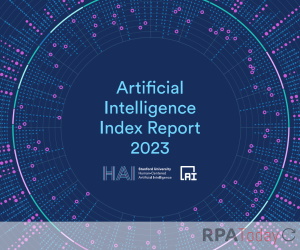
Machine learning models, the development of which used to be the exclusive domain of academia, are now being produced most often by private industry and RPA is currently the biggest beneficiary, according to a new report from the Institute for Human-Centered Artificial Intelligence (HAI) at Stanford University.
In its comprehensive 386-page Artificial Intelligence Index Report 2023, HAI found that private investment in AI decreased on a year-over-year basis for the first time in a decade (down nearly 27 percent to $92 billion in 2022 compared to 2021). Overall, however, investment by private companies in AI technologies is 18 times greater in 2022 than it was a decade earlier. And, the report found, while the percentage of companies adopting AI tech has plateaued, those that have added AI capability are “realizing meaningful cost decreases and revenue increases.”
From an implementation standpoint, HAI found there has been a relative shift in interest from front-office to back-office activities and RPA currently is leading the way.
The report, relying on data assembled by McKinsey, found that, among businesses using AI technology, RPA was the capability embedded in software used by the most companies. Across all industries, 39 percent of respondents indicated RPA was the most embedded AI technology, followed by computer vision (34 percent), natural language text understanding (33 percent) and virtual agents (33 percent).
The highest rates of RPA use compared with other AI technologies were in telecom (48 percent), financial services (47 percent) and legal and professional services (46 percent).


